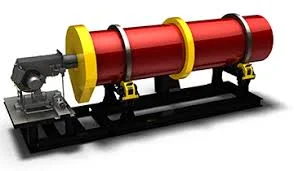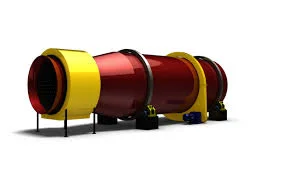Exploring the Working Principles of Sand Cooling Drums in Foundry Processes
The foundry industry plays a pivotal role in the manufacturing sector, producing a wide range of metal parts and components. One of the critical processes in foundry operations is the cooling and separation of castings from their molds, particularly when using sand as a casting medium. Sand cooling drums are essential equipment in this regard, designed to enhance efficiency, improve safety, and ensure the quality of the final product. This article delves into the working principles of sand cooling drums, their types, and their significance in the foundry processes.
The Importance of Sand Cooling Drums
Sand cooling drums are indispensable in the continuous casting production line, especially for small castings such as no-box extrusion shapes and high-pressure shapes. They serve multiple functions, including continuous crushing of sand blocks, cooling of old sand and castings, and facilitating the separation of sand from the casting. The efficiency and reliability of these drums are paramount, as they directly impact the production output and the integrity of the castings.

Types of Sand Cooling Drums
Sand cooling drums come in two main variants: single-layer and double-layer drums. Each type has its unique characteristics and applications within the foundry process.
Single-Layer Drums
The single-layer drum is characterized by its ability to perform continuous crushing, cooling, and sand falling. As the casting enters the drum through conveying equipment or a chute, it rolls and moves continuously within the drum due to the slow, continuous rotation of the drum. This motion causes the casting to crack, which aids in the separation of the casting from the sand. The broken old sand then flows through the grid into the old sand conveying system, while the castings are discharged through the discharge port. It's important to note that these drums are not suitable for damaging thin-wall castings.
Double-Layer Drums
In addition to the features of the single-layer drum, double-layer drums also have the function of cleaning the casting. This additional capability makes them more versatile and suitable for a wider range of applications within the foundry process.
Components and Structure
Sand cooling drums are composed of several key components that work in unison to achieve their intended functions. These components include the drum body, transmission device, guide rail, and dust removal device. The drum body is the central part where the casting and sand interaction takes place. The transmission device powers the rotation of the drum, ensuring a steady and controlled motion. The guide rail helps in directing the casting and sand flow, while the dust removal device manages the emission of dust and particles, maintaining a clean and safe working environment.
Operational Efficiency and Performance
The performance of sand cooling drums is measured by several parameters, including maximum production capacity, dimensions, and power requirements. The LG series and L33 series drums offer varying capacities and specifications to cater to different production needs.
LG Series: This series includes models like LG 3212, LG 3216, LG 3218, LG 3221, LG 3225, and LG 3230. They have a maximum production capacity ranging from 20 to 70 tons per hour, with diameters and lengths that increase with the model number. The distance of the centerline from the ground level, weight, ventilation requirements, rated speed, and installation power also vary accordingly.
L33 Series: Models such as L3319, L3321, and L3325 offer a maximum production capacity of 40~140 tons per hour. These models have inner roll diameters and lengths that are larger than those of the LG series, reflecting their higher capacity and suitability for larger-scale operations. The ventilation requirements and installation power for these models are also higher, indicating their more robust and powerful nature.

Advantages of Sand Cooling Drums
The use of sand cooling drums in foundry processes offers several advantages:
Improved Efficiency: The continuous and automated operation of sand cooling drums significantly reduces the time required for cooling and separation, leading to increased production efficiency.
Quality Enhancement: By ensuring a thorough separation of sand from castings, these drums help maintain the quality and integrity of the final product.
Safety: The enclosed design of the drums minimizes the risk of accidents and injuries associated with manual sand removal and cooling processes.
Environmental Compliance: The dust removal devices in these drums help in managing dust emissions, contributing to a cleaner and more environmentally friendly foundry operation.
Cost-Effectiveness: The reduced labor requirements and increased efficiency lead to lower operational costs and higher profitability.
Conclusion
Sand cooling drums are a testament to the evolution of foundry technology, offering a blend of efficiency, safety, and environmental sustainability. As the foundry industry continues to advance, the role of sand cooling drums in ensuring the quality and consistency of castings remains indispensable. Understanding their working principles and operational parameters is crucial for foundry operators to optimize their processes and maintain a competitive edge in the market.




